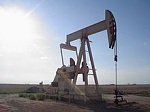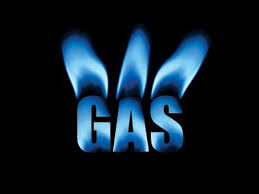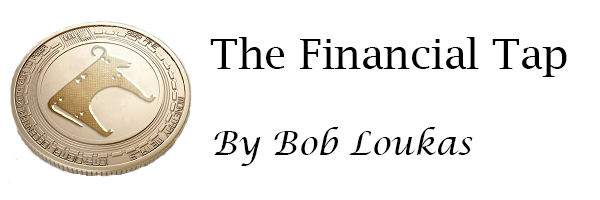Posts
Market Update – Dec 9th
/in Premium /by Bob LoukasEfficient Markets
/in Premium /by Bob LoukasMidweek Market Update – Dec 3rd
/in Premium /by Bob LoukasFinal Holiday Sales Coming Soon
/in Premium /by Bob LoukasPatience Is Required.
/in Premium /by Bob LoukasBullish, But Do Don’t Fall In Love – Free Report
/in Free /by Bob LoukasSample Premium Member Report published on Nov 14th, 2015.
Gold Cycle
Cycle Counts
| Cycle | Count | Observation |
Probable Outlook |
Cycle Clarity |
Trend |
| Daily | Day 30 | Range 24-28 Days – 3rd Daily Cycle | Bearish |
Green |
Failed |
| Investor | Week 17 | Range 22-26 Weeks | Bearish | Green | Failed |
| 4Yr | Month 40 | Range 48-52 Months | Bearish |
Green |
Failed |
Gold moved relentlessly lower again this week, ignoring normal Daily Cycle timing. The move has given life to my frequent warnings about the persistent, unyielding declines that bear markets often bring. Bear markets are notorious for elevating investors’ hopes through sharp moves higher that quickly give way to crushing declines. And as we’ve witnessed with Gold, the declines can be prolonged to the point that they wear down even the most ardent bulls.
Surprisingly, there is still an endless stream of pundits and investors declaring that Gold’s bear is over. Too many traders seem more preoccupied with catching a possible turn higher than with acknowledging the reality of the past 4 years and understanding Gold’s potential downside. Bullish bias helps to explain why, despite Gold’s sitting at a new 5-year low, sentiment is still not at bearish extremes. In addition, from the latest commitment of traders report (COT), it’s clear that speculators are still offloading bullish Long positions as they begin to accumulate bearish Short positions.
When combined with an Investor Cycle weekly count that easily supports another Daily Cycle, the above two indicators – Sentiment and COT – make me very cautious regarding Gold.
The daily chart shows just how ugly the current action has been, and it speaks volumes about the underlying bearish tone of the precious metals complex. On the surface, the current decline is severe enough to look like the final move into an ICL. But Gold’s longer term Investor Cycle suggests that another DC is needed to complete the IC.
In the immediate term, Gold is clearly oversold and should move higher in a new Daily Cycle rally. But based upon the sector’s clear weakness, it would not be a surprise if the rally lasted only a day. Remember, the next DC should be the last of the current Investor Cycle, and if it’s true to form, should end with twenty sessions of panicked selling.
Platinum is already sharply lower, and produced a failed Investor Cycle a few weeks ago. Silver also shown a failed Investor Cycle in Week 5. And now, at week 16, it has fallen back beneath the lows of the last two Investor Cycles and sits just $0.30 away from the week 5 intra-day low. Silver looks extremely vulnerable at present, but is still far from the oversold levels that is can attain at IC Lows. Silver could easily see 4-5 weeks lower as Gold finds its ICL in December.
Although Gold’s week was negative overall, the bleeding was fairly contained. And after four consecutive weeks lower, it’s due for a Daily Cycle rally that should push it temporarily higher. The rally could be fast and convincing enough to cause steadfast bulls to again proclaim that a double bottom has occurred.
But because the timing and evidence support another significant move lower, I believe that any rally will be very short lived. The new Daily Cycle rally should be just enough to clear oversold technical levels and allow the Bollinger Bands to expand to accommodate the next big decline.
For those asking whether the current decline could be a short, 16 week ICL, I just don’t see it. A perfect double bottom forming with the July low would wrap a nice bow around the bear market, but the evidence doesn’t support it. It is not impossible by any stretch, but it is very unlikely.
Investor Cycle Trading Strategy
This week, we have virtually the same story as last week: it’s too late in Gold’s Daily Cycle to add a Short position. An opportunity to Short the IC could still come, but the current move has pushed price so far into oversold territory that we would be foolish to chase it. Before I consider a Short trade, I’ll need to see a $40 +/- rally.
Daily Cycle Trader Strategy
Nimble traders could buy a Swing Low (when one arrives), since the Daily Cycle is well past due for a rally. For anyone who takes such a trade, setting tight stops and actively managing/increasing them will be important.
I will personally consider a trade on either a Swing Low or a lower opening and intraday reversal. If I do take a position, it will be with the goal of making a quick profit and getting out by the end of the week.
In addition, I’m still waiting for a strong 2-3 day rally to put on a Short position. This should be a high percentage trade because of the high likelihood of a big decline into December.
Portfolio Positions Summary
Open Positions – Investor Portfolio –
None.
Open Positions – Daily Cycle Trader Portfolio –
None.
Equities (S&P500) 
Cycle Counts
| Cycle | Count | Observation |
Probable Outlook |
Cycle Clarity | Trend |
| Daily | Day 35 | Range 36-42 Days – 2nd Daily Cycle. |
Bearish |
Green |
Up |
| Investor | Week 12 | Range 20-24 Weeks | Bullish |
Green | Failed |
| 4Yr | Month 77 | Range 50-56 Months- 8th Investor Cycle. |
Bearish |
Green | Up |
I’m not going to dive too deeply into analysis of the equity markets this week since they have been tracking well to our short term expectations. In the longer term, though, there is less clarity. There is significant evidence to support both the bear and the bull cases.
The equity markets are once again at a cross-roads, with bulls seeing a one year consolidation that will give way to the next bull leg higher, and bears believing that the current counter-trend rally is now exhausted and that the real bear market is on deck. Both scenarios have creditable evidence, so arguing either side can easily become an exercise in pumping bias.
It’s no secret that I favor the bullish outlook, and I’ve have positioned my capital as such. But the bears have good evidence too, so I won’t waste your time working to convince you that the bullish case is the best option. That said, I do want to make sure I’ve clearly laid out my thinking. My primary evidence is simply the dominant bullish trend, which has now been interrupted by a rare market correction. But since the correction didn’t break the bull market trend, history tells us that this should be a buying opportunity. We do, however, need to be wary of a potential trap.
At this point, given the long term uncertainty in equities, it’s most important to be flexible in our viewpoint. As a general rule, we should never be afraid to drop (or to switch) a view on an asset. While it’s OK to be wrong on an outlook, it is not OK to stay wrong out of stubbornness.
Until Wednesday, the decline on the daily chart was orderly and controlled. But on Thursday, once the 20 day moving average was lost, a small bout of panic selling ensued, with equities seeing two consecutive 1% declines. And even though the decline was deeper than expected, from a timing standpoint, the it has perfectly matched the outlook I’ve presented for two weeks. Since the S&P never showed a clear Half Cycle Low, I believe that we will see only one decline, and that into the next DCL. It’s unclear whether the current move down will become the DCL, but with price having retraced 38.2% of the Daily Cycle rally, there is a strong chance that equities will open higher next week.
I said I wouldn’t spend time promoting the bullish case this week, but I found one piece of evidence with an excellent track record that I wanted to share. The ICI (mutual fund industry) released its latest equity mutual fund flow figures, and for the latest week, domestic flows took a big hit. Investors pulled more than $12 billion out of US mutual funds, the largest net withdrawal since August, 2011.
The chart below shows that total net flows are hovering below $100 billion, a level seen only in late 2008/early 2009 and late 2011. If we look further, these large equity outflows have corresponded with market corrections of greater than 10%. So the current level of outflow is associated with the bottom of a move, and not the start of a large decline.
Newton’s 3rd Law tells us that for every action, there is an equal but opposite reaction…and that relationship is certainly found in financial markets. After rallying for over 6 weeks and 200 points, equities can’t be expected to continue higher forever. On the charts, the current decline looks scary, but it’s only a 38.2% consolidation of the move since the last DCL. To look at a one week decline in isolation without acknowledging the preceding six weeks is cherry-picking, which can lead to a warped view of events. Netting it out, because the current decline has come during the timing band for a DCL, it is a very normal development.
We could conceivably see another week lower, since Daily Cycle timing would support the move. But I believe the market is almost finished back-filling, and that a new rally is likely to begin this week.
The rally out of the coming DCL will finally provide some clarity on the bull market’s intentions. If the market has already topped and the current action is just part of a long and wide topping pattern, we will see the coming Daily Cycle rally top out quickly and give way to a rapid decent.
But if the dominant bull market trend resumes, as I think it will, the traditionally strong holiday period should lift the market significantly higher. If the bull is to remain alive, it will need the FED’s help, first by first keeping rates unchanged and then by extending support for zero interest rates.
Flexibility will be the watchword for equities. We don’t need to always be right, but we must avoid being wrong for a significant amount of time.
Investor Cycle Trading Strategy
I took a first small Long position and hope to add to it. I’d been waiting patiently for the right setup, and when it arrived Friday, I took it. Once we see a turn higher and a clear DCL, I will consider both adding to the position and increasing stops to the DCL point. If this trade is successful, we should hold it for around 6 weeks.
Daily Cycle Trader Strategy
I took a trade before the Swing because the markets became significantly oversold in the short term. I’m looking to hold this position for 15-18 trading days.
Portfolio Positions Summary
Open Position – Investor Portfolio –
25% Position in SSO (2x Long S&P ETF). Bought at $62.32 Stop at $55.05
Open Position – Daily Cycle Trader –
Two positions in SSO (2x Long S&P ETF) Bought at $61.92 Stop at $57.35
CRUDE OIL
Cycle Counts
| Cycle | Count | Observation |
Probable Outlook |
Cycle Clarity |
Trend |
| Daily | Day 14 |
Range 36-42 Days (2nd Daily Cycle) | Neutral | Green | Up |
| Investor | Week 12 |
Range 20-24 Weeks |
Neutral |
Green | Down |
| 4 Year | Month 9 | Range 48-52 |
Bearish |
Green |
Down |
This week, Crude oil clearly and unequivocally declared its longer term intentions. It topped on just day five of the current Daily Cycle and had an early DC failure on day 12, so the path forward is decisively lower. The bad news for Crude is that there should be at least twenty more trading days before the next DCL, and that’s plenty of time to suffer some serious selling.
But considering that Crude has seen eight straight declining sessions, additional immediate downside is probably too much. So I expect Crude to rally back toward the 10 day moving average before rolling over. But since the short term trend has clearly turned and now aligns with the long term trend, it’s extremely unlikely that Crude can recover from here. And since both trends are in agreement this late in the Cycle, it’s very difficult to see how Crude can avoid further significant declines.
Crude has been in a cyclical decline for only 16 months, while a bear market can last for three to four years. So while it’s impossible to know how long the current bear market will last, to expect it to end with the coming ICL is far too optimistic and ignores reality. So long as Crude oil supplies are bursting at the seam, it will be impossible to have any recovery in price.
I originally expected that the bear market declining trend-line would be breached during the current DC, but the resumption of the bear market caused it to again serve as significant resistance. Going forward, the trend line should now contain Crude’s price.
Since this is only Week 11 of the Investor Cycle, Crude could be looking at significant declines during the next couple of months. Unless the Dollar weakens and tops well before expected, I suspect that Crude may make deeper, multi-year lows in the near future. Whenever a bear market is rooted in poor fundamentals, as is the case with Crude, we should expect an overshoot to the downside.
Investor Portfolio Trading Strategy
I expect a short rally next week, and if Crude complies, I will use is as an opportunity to take a Short position. The Investor Cycle timing is just too young to ignore the downside potential here.
Daily Cycle Trader Strategy
We were stopped out of the Long trade, so there’s nothing to do but move on. Now I’m looking to reverse the trade and go Short given the clear Cycle evidence. But after eight straight sessions lower, Crude is too oversold for us to get in Short now. We need to be patient and let price come to us.
Portfolio Positions Summary
Open Positions – Investor Cycle Portfolio –
None.
Open Positions – Daily Cycle Trader Portfolio –
None.
$US DOLLAR
Cycle Counts
| Cycle | Count | Observation |
Probable Outlook |
Cycle Clarity |
Trend |
| Daily | Day 22 |
Range 18-22 Days – 3rd Daily Cycle | Bearish |
Green | Up |
| Investor | Week 12 |
Range 18-22 Weeks | Caution |
Green |
Failed |
| 3Yr | Month 17 | Range 36-42 – 6th Investor Cycle. | Bullish | Green | Up |
There is little of note to add to the Dollar’s outlook this week – I can only reiterate that it continues to behave bullishly. I do expect short term weakness, however. With a Swing High in place, and only three days into what looks to be a Daily Cycle decline, the Dollar should fall further next week and break below the 10dma and the rising trend-line.
These moves appear to be part of a standard decline into Daily Cycle Low. A consolidation after 19 days of rising prices is normal behavior, and in this case is very likely a precursor to at least one more rally during the current IC. There is a real bid under the Dollar that is driven by the expectation of a rate hike during the December FED Open Market Committee meeting. I believe, however, that the FED will not hike rates, causing the Dollar to form an IC Top and roll over.
Investor Cycle Trading Strategy
I see no trades at present.
Daily Cycle Trader Strategy
There are no Trades to be taken at present
Portfolio Positions Summary
Investor Cycle Portfolio –
None.
Daily Cycle Trader Portfolio –
None.
U.S Bonds
Cycle Counts
| Cycle | Count | Observation |
Probable Outlook |
Cycle Clarity |
Trend |
| Daily | Day 5 | Range 20-26 Days – (DC#4) | Bullish | Green | Up |
| Investor | Week 21 | Range 22-26 Weeks |
Bearish |
Green |
Failed |
| 3Yr | Month 22 | Range 50-56 Months- |
Bullish |
Green |
Up |
The response (higher) has been somewhat muted this past week, when we expected a decent counter-trend rally. We’ve been following the inverse relationship of the bond market to equities for some time, so I believe it’s rather telling that bonds could not manage a substantial move higher as equities were aggressively sold off.
But at least we finally see a delayed and extended Bond Cycle turn higher and show us a new Daily Cycle. The weak and steady incline these past few days looks to be establishing a bear flag, which will fall sharply once the equity markets turn higher.
Investor Cycle Trading Strategy
No trades, but a potential short is coming at the top of this Daily Cycle. In effect, this is a very similar trade with going long Equities.
Daily Cycle Trader Strategy
Could short bonds at the top of this Daily Cycle.
Portfolio Positions Summary
Investor Portfolio –
None.
Daily Cycle Trader Portfolio –
None.
Natural Gas 
Cycle Counts
| Cycle | Count | Observation |
Probable Outlook |
Cycle Clarity |
Trend |
| Daily | Day 11 | Range 20-26 Days – (1st or 5th DC) | Bullish | Green | Down |
| Investor | Week 2 or 31 | Range 22-26 Weeks | Bearish |
Green |
Down |
| 3Yr | Month 42 | Range 48-52 (Months) | Bearish | Green | Down |
It is pretty clear that natural gas has already formed a new Daily Cycle, and is already up to Day 11. The weak action to date made it difficult to make that call, but with Friday’s move, it is difficult to ignore. The problem is that we just don’t know if this is a new Investor Cycle, as you would expect. We’re finding that although oversold for many months, natural gas is acting horribly and the overall sector fundamentals remain extremely weak.
Investor Cycle Trader Strategy
Back to the drawing board and waiting for a clear and sustainable trend to develop.
Daily Cycle Trader Strategy
No trades.
Portfolio Positions Summary
Investor Portfolio –
None.
Daily Cycle Trader Portfolio –
None.
Midweek Market Update – Nov 19th.
/in Premium /by Bob LoukasThe Final Gold Chapter
/in Public /by Bob LoukasThis is the final chapter of this intermediate gold Cycle, and it’s likely to get ugly. If you’ve followed the blog these past few months, you would have been prepared for most of this move as it unfolded in real-time. The first post back on October 1st was Gold Cycle Running Out of Steam and was then followed up (Nov 1st) with Don’t Trust Gold Here. In both cases, I highlighted how the Weekly Cycle had topped and how similarly past Cycles behaved . It was why I argued that this Cycle appeared to be no different to the preceding failed, bear market Cycles since 2011. This is where gold finds itself today, standing on a ledge before a significant fall. For the patient (and protected) bulls, it may well become the final chapter of this great bear market.
Gold moved relentlessly lower again last week, ignoring normal Daily Cycle timing. The move has given life to my frequent warnings about the persistent, unyielding declines that bear markets often bring. Bear markets are notorious for elevating investors’ hopes through sharp moves higher that quickly give way to crushing declines. And as we’ve witnessed with Gold, the declines can be prolonged to the point that they wear down even the most ardent bulls.
Surprisingly, there is still an endless stream of pundits and investors declaring that Gold’s bear is over. Too many traders seem more preoccupied with catching a possible turn higher than with acknowledging the reality of the past 4 years and understanding Gold’s potential downside. Bullish bias helps to explain why, despite Gold’s sitting at a new 5-year low, sentiment is still not at bearish extremes. In addition, from the latest commitment of traders report (COT), it’s clear that speculators are still offloading bullish Long positions as they begin to accumulate bearish Short positions.
When combined with an Investor Cycle weekly count that easily supports another Daily Cycle, the above two indicators – Sentiment and COT – make me very cautious regarding Gold.
The daily chart shows just how ugly the current action has been, and it speaks volumes about the underlying bearish tone of the precious metals complex. On the surface, the current decline is severe enough to look like the final move into an ICL. But Gold’s longer term Investor Cycle suggests that another DC is needed to complete the IC.
In the immediate term, Gold is clearly oversold and should move higher in a new Daily Cycle rally. But based upon the sector’s clear weakness, it would not be a surprise if the rally lasted only a day. Remember, the next DC should be the last of the current Investor Cycle, and if it’s true to form, should end with twenty sessions of panicked selling.
Although Gold’s week was negative overall, the bleeding was fairly contained. And after four consecutive weeks lower, it’s due for a Daily Cycle rally that should push it temporarily higher. The rally could be fast and convincing enough to cause steadfast bulls to again proclaim that a double bottom has occurred.
But because the timing and evidence support another significant move lower, I believe that any rally will be very short lived. The new Daily Cycle rally should be just enough to clear oversold technical levels and allow the Bollinger Bands to expand to accommodate the next big decline.
For those asking whether the current decline could be a short, 16 week ICL, I just don’t see it. A perfect double bottom forming with the July low would wrap a nice bow around the bear market, but the evidence doesn’t support it. It is not impossible by any stretch, but it is very unlikely.
Possible Trading Strategy
Nimble traders could buy a Swing Low (when one arrives), since the Daily Cycle is well past due for a rally. For anyone who takes such a trade, setting tight stops and actively managing/increasing them will be important.
The higher percentage or better risk/reward trade would come from allowing the oversold levels to cool off with a strong 2-3 day rally, and to then consider putting on a Short position. This should be a high percentage trade because of the high likelihood of a big decline into December.


















